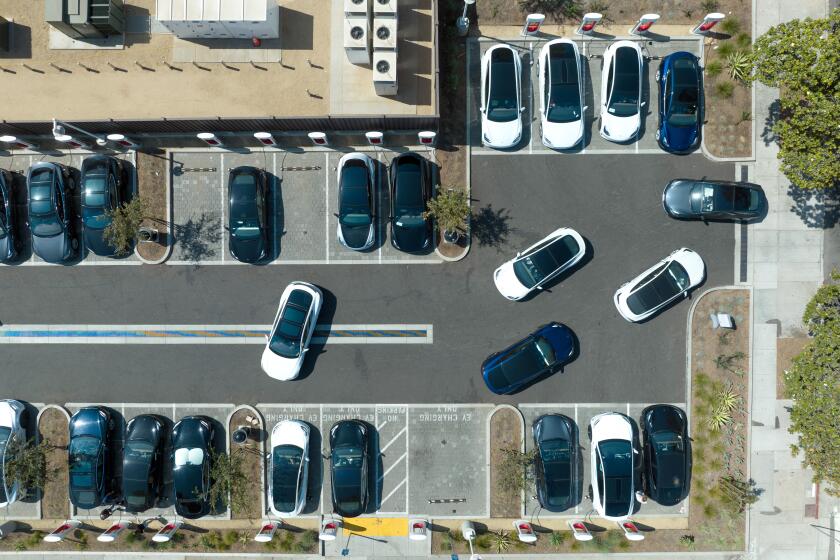New level of innovative capabilities in Envoy XUV
- Share via
Odd, isn’t it? General Motors Corp., widely regarded within the industry as the most traditional, slowest-moving member of the automotive manufacturing community, has been the source of some of the most innovative, market-savvy ideas we’ve seen these last five years.
Case in point: The Chevrolet Avalanche, a four-door sport utility vehicle that with the removal of a bed cover, the rear window and a midsection behind the rear seats turns into a pickup truck.
Case in point two: The slightly similar 2004 GMC Envoy XUV, just now reaching dealers.
The GMC Envoy itself arrived a few years ago, part of a trio of SUVs that also included the Chevrolet TrailBlazer and Oldsmobile Bravada. The group has since grown into a small family, with the Buick Rainier and the Ascender from GM-controlled Isuzu.
The original Envoy was a five-passenger vehicle. A year later, an extended version called the XL arrived, offering third-row seating made possible by 16 inches in added overall length.
Now comes the Envoy XUV, based on that extended XL model. But instead of a third seat, the new model comes with a glass rear window and a partition right behind the second-row seat. Behind that window and partition is a separate cargo area.
Here’s the innovative part: Stick your key in the tailgate lock and turn it, and the rear window -- not the one right behind the back seat but the one all the way at the rear, in the tailgate -- slides down inside the tailgate.
Turn the key again, and the roof section over the rear cargo area slides forward, sort of like a backward sunroof. This leaves the cargo area open. Granted, you can’t put a lot of stuff back there, but the open top allows for much taller cargo than you could squeeze in otherwise.
But GMC isn’t through yet.
Remember that window and partition right behind the rear seat? They’re removable. And the rear seats fold down, then tumble forward. And the tailgate has a latch on it that allows you to put it down and keep it down. Do all that, and you can load a 4-by-8-foot sheet of plywood and then some. Of course, with that window and partition removed, the passenger cabin is exposed to the outside elements -- on frigid or rainy days, it may not be acceptable.
That said -- and I’m sorry this is getting complicated, but XUV engineers had a lot of tricks up their sleeves -- you can remove that window and partition, open the top, fold down the tailgate and load your cargo. But if your cargo isn’t so long that it extends out onto the tailgate, and if it isn’t so tall that it reaches up into the open space where the retractable roof was, close the tailgate and the roof, and the interior and cargo are sealed off from the outside.
Finally! We’re done with that part. Otherwise, the Envoy XUV looks and feels like the regular Envoy XL. Both trim levels -- the base SLE and the SLT -- come standard with a 4.2-liter, 270-horsepower six-cylinder engine and four-speed automatic transmission. The XUV rides smoothly, and the engine and transmission have more than adequate power.
I’m not crazy about the handling of the extended Envoy models -- they feel as if they have too much weight in the rear -- but it isn’t billed as a sports car.
The SLT that I tested had a load of options, including a satellite-linked navigation system ($1,995), a power sunroof ($800), polished aluminum wheels ($495), side air bags ($350), XM satellite radio ($325) and a few lesser items, which with shipping brought the $35,840 base price to $42,215.
It’s not cheap, but it certainly is cheaper than buying an SUV and a pickup truck.





